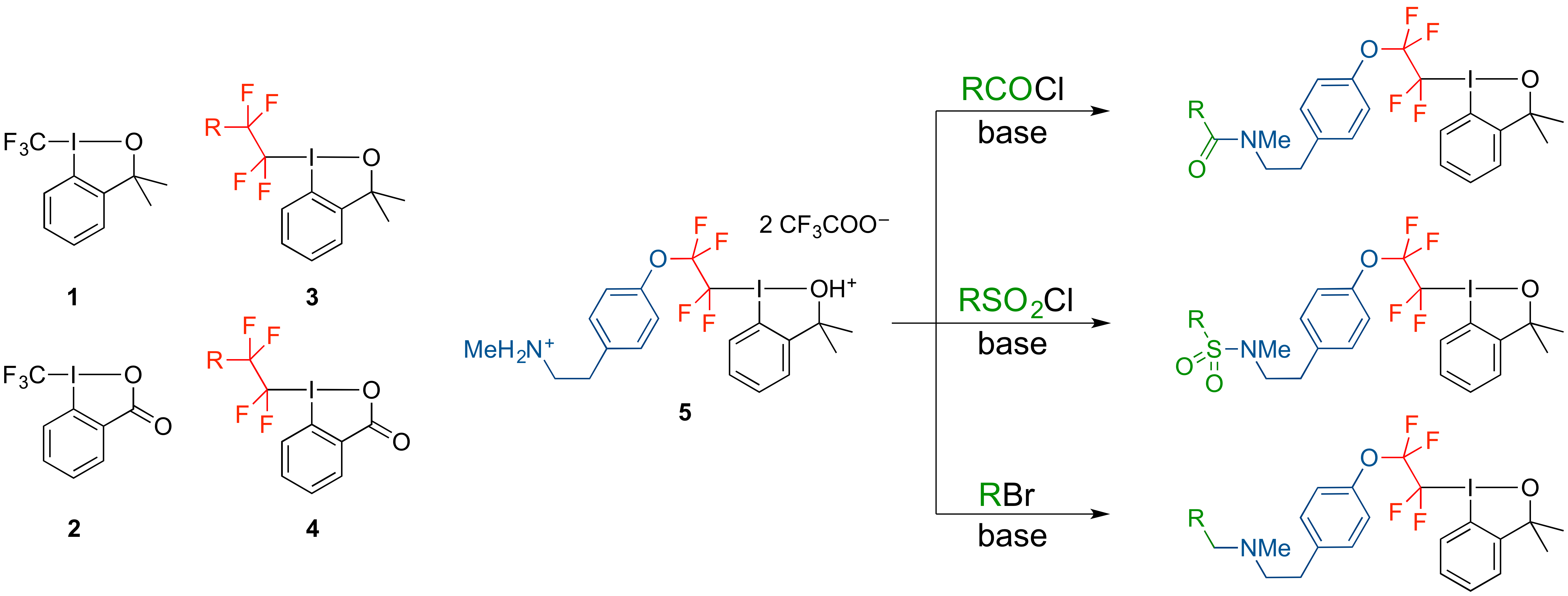Irreversible cysteine-selective labelling of a protein using modular electrophilic fluoroalkylation reagents
Hypervalent iodine-based compounds 1 and 2 have become popular reagents for formally electrophilic trifluoromethylation owing to their ease of use and reactivity with a broad variety of nucleophilic substrates [1]. In 2016, we extended the reagents bearing the terminal trifluoromethyl group by synthesizing a series of λ3-iodanes 3 and 4 containing a CF2CF2R motif (where R = SAr, OAr, N-heterocycle) [2]. As the reactivity of the resulting reagents was comparable with that of the original ones (1, 2) and the tetrafluoroethylene moiety can serve as a linker, giving the possibility of functional applications, we explored the potential of this concept further.
Reagents 3 and 4 were limited to rather basic structures as most functional groups would not tolerate the synthetic pathway. Hence, a reagent containing a secondary amine was prepared (5) and investigated in late-stage derivatization via mild formation of amides, sulfonamides and tertiary amines. Eventually, we arrived at 22 modular reagents containing manifold functional units (e.g., tetraethylene glycol, biotin, and several fluorophores) [3].
All the reagents (1–5) display high reactivity toward thiols. Therefore, we envisaged that the modular λ3-iodanes derived from 5 could be useful as reagents for cysteine-selective tagging of biomolecules. Indeed, when tested with artificial retro-aldolase RA95.5–8 S25C K210M, the exposed cysteine site was labelled selectively [3]. In contrast, the enzyme’s active site containing a reactive lysine was left intact, which was not the case with conventional reagents based on maleimide and iodoacetamide. Therefore, the reagents’ applicability goes beyond pure organic synthesis – they have the potential to constitute the basis of a new approach to protein labelling.

This work was supported by the Czech Science Foundation (grant no. 17-00598S).
[1] J. Charpentier, N. Früh, A. Togni, Chemical Reviews, 2015, 115, 650–682.
[2] V. Matoušek, J. Václavík, P. Hájek, J. Charpentier, Z. E. Blastik, E. Pietrasiak, A. Budinská, A. Togni, P. Beier, Chemistry – A European Journal, 2016, 22, 417–424.
[3] J. Václavík, R. Zschoche, I. Klimánková, V. Matoušek, P. Beier, D. Hilvert, A. Togni, Chemistry – A European Journal, 2017, in press, DOI 10.1002/chem.201700607.